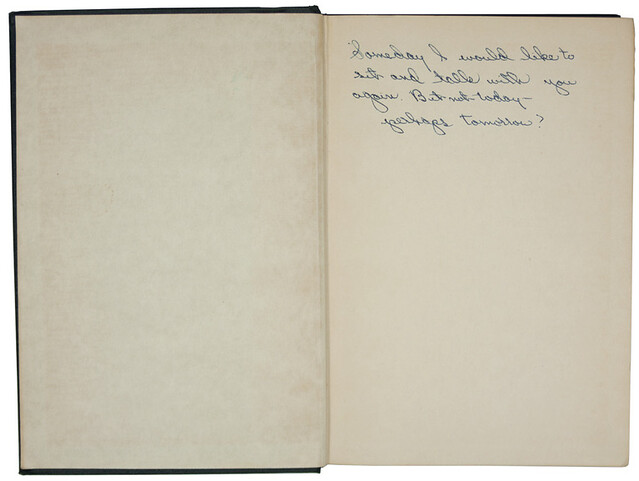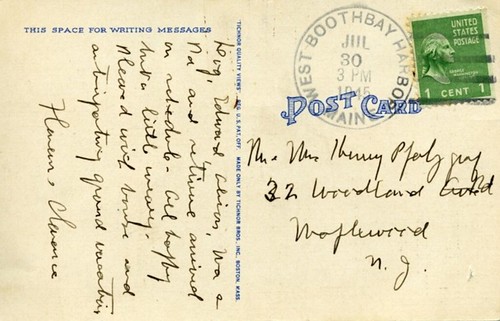
Click to enlarge
What you see above is the main card from the student file of Anna DeVito, who attended the Manhattan Trade School for Girls (or Manhattan Industrial High School, as it had recently been renamed) from 1933 through 1935. Her card is pretty much like all the others in my report card collection, but I'm nonetheless very excited about it, because it wasn't part of my collection until a few days ago.
Here's the deal: When I found the Manhattan Trade report cards back in 1996, three friends were with me. We each took a batch of cards, and then the other three people each donated their batches to me when I decided to launch the Permanent Record project. (For more details on all of this, look here.) One of those friends, Daniel Radosh, recently found two additional students' card packets, including Anna's and sent them to me.
"Our box of cards was in a filing cabinet in the basement," says Daniel. "The other day I took another box out of the cabinet and these two students' report cards were underneath. I searched around and they were the only two that had slipped out."
You can see the rest of Anna DeVito's file here (for all of these, you can click to enlarge):




Compared to some of the other reports in my collection, Anna's file isn't especially juicy, but it does offer some interesting details:
• Anna was born in October of 1917. If she's still alive, she'll be turning 95 in two months.
• I love that her father's occupation is listed simply as "Ice." Later in her file, it's explained that he "recently bought [an] ice business" -- a sharp reminder that many New Yorkers still didn't have electric refrigerators in 1935.
• Four different teachers referred to Anna as a "talker."
• Someone on the school's staff noted that Anna was "rather cute -- has pineapple bob." I'd never heard of this term, so I Googled "pineapple bob," but all I came up with was a cyclist named Pineapple Bob. Then I tried "pineapple hairstyle" -- bingo. Doesn't look like the hair in Anna's photo, but maybe she changed her ’do during her time at the school.
The other student whose card packet Daniel found was named Carmilla Despagne, who attended Manhattan Trade in 1912 and ’13. Unfortunately, as you can see below, her cards sustained significant water damage (again, you can click to enlarge):
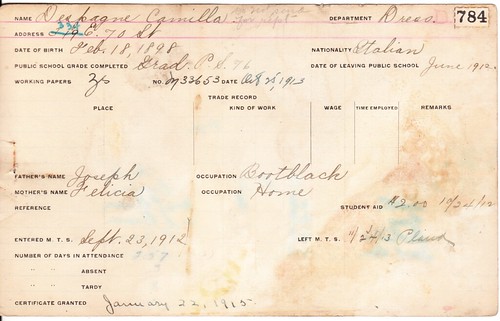
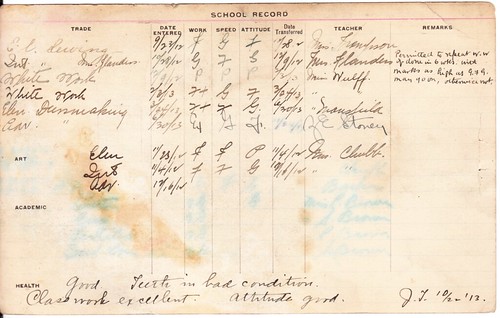
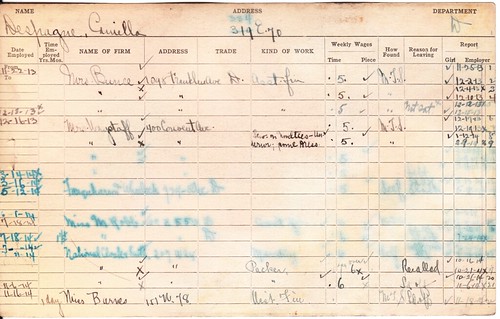




Carmilla's file is harder to suss out (in part because of the water damage, but also because her file was filled out in handwriting that's a bit trickier to decipher), but there's still some interesting stuff in there:
• Her father was a bootblack. First time I've seen that term used in any of the report cards.
• At one time she worked making buttonholes! I know that was once a big niche industry in the garment district, but can you imagine working on nothing but buttonholes all day?
• Carmilla apparently liked her first job, working for a Mrs. Bunce: "Like it very much. Mrs. B. is very nice to me and I feel at home. Think I'm very satisfactory." But the feeling was apparently not mutual, as noted in this bit of feedback from Mrs. Bunce: "May have to let her go. Can sew nicely, but does not heed instruction. Talkative, sullen, and inclined to be impertinent." Eight days later, there was this: "Will have to let her go tomorrow. Have given her another week's trial. Prefer more experienced gal." A school staffer then noted parenthetically, "Her attitude apparently more at fault than her work." (To put this all in some perspective, Carmilla was only 15 at the time.)
• Unfortunately, Mrs. Bunce wasn't the only one who had issues with Carmilla's work. Another employer, Miss Wagstff, had this to say: "Not as good as at first. ... Inattentive. Slow. Took all day to sew on six yards of [illegible] and had to rip it all off and sew on again because she had failed to sew pieces together first as directed. Seems to lack interest and energy."
Despite these negative reviews, the school continued to arrange work for Carmilla for several more years.
After working with the same set of 395 cards for so long, it's exciting to have these two new students to add to the collection. New material!



































